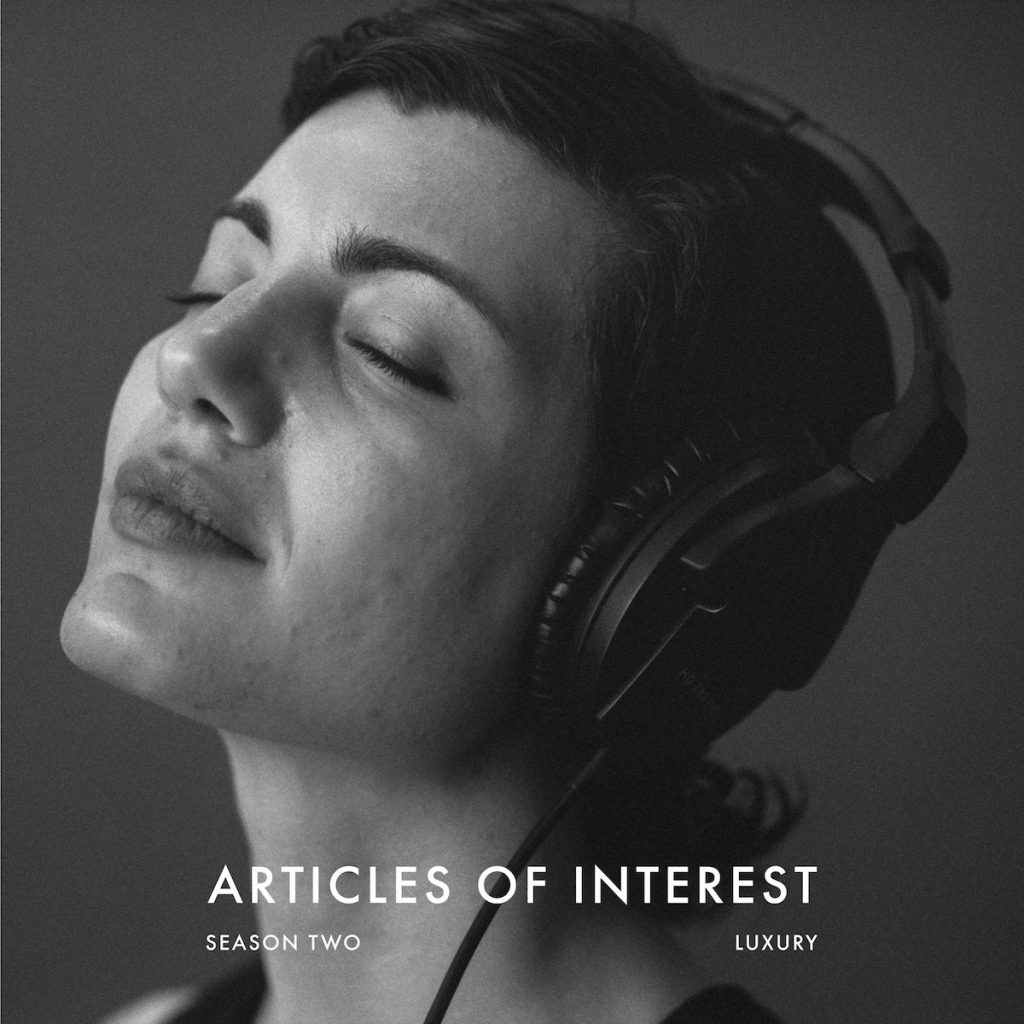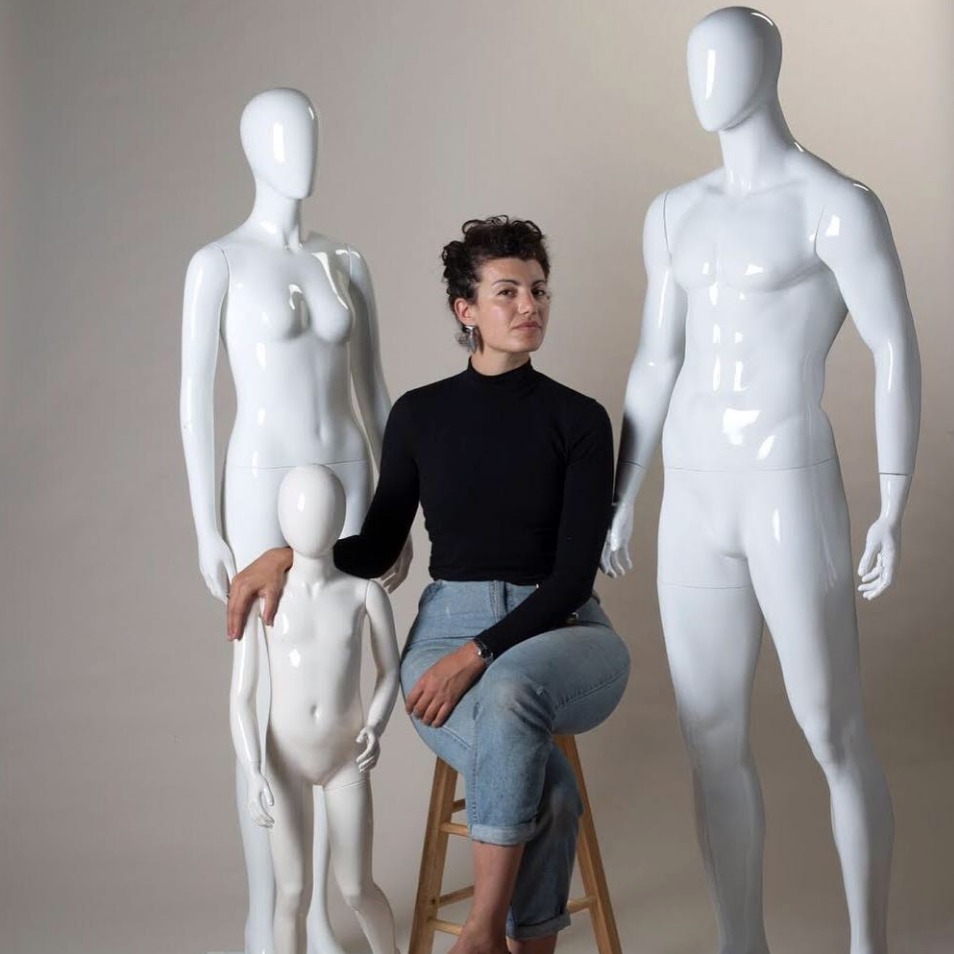
Avery Trufelman records her podcast nowadays at home. She transformed her small closet into a makeshift recording studio and edits everything in her living room. This DIY spirit is second nature for a woman who has made award-winning podcasts using a handheld Zoom H2N recorder, which costs a fraction of what gear-heads spend on the latest podcasting equipment. Trufelman, on the other hand, knows that the most crucial thing for podcasting is having a good idea.
Tomorrow, Trufelman is releasing the first episode of the new season of Articles of Interest, a 99% Invisible spin-off that’s known for its brilliant ideas. When the show debuted in 2018, it earned mountains of accolades. The BBC, Curbed, LAist, New York Magazine, and The New Yorker all called it the best podcast of the year. In six briskly paced episodes that mostly ran under a half-hour, Trufelman skillfully stitched together stories involving capitalism, sustainability, social history, identity, and aesthetics. This sociological approach to clothing is just one of the many reasons why the show has such a broad audience — it appeals just as much to fashion nerds as it does to everyday people. It’s also one of the reasons why so many people, including me, have been eagerly awaiting the new season.
Whereas the first season is about the surprising history of clothes we take for granted — Hawaiian shirts, plaid patterns, and blue jeans among them — the new season is about luxury. In this COVID era, it seems strange to talk about fancy clothes that few people have the opportunity to wear, let alone the money to purchase. But much like how the first season wasn’t just about clothes, the new one isn’t just about fancy things. “I didn’t intend for it to be so achingly appropriate, but the series begins with a story that takes place in post-occupation France,” she tells me, “and how important fashion ends up being for the nation’s morale and economic recovery.”
In the aftermath of World War II, some of the leading fashion designers in Paris came together to create scaled-down versions of their couture creations, which they used to dress up miniature figurines. The figurines were put on display at the Louvre, where they attracted over 100,000 visitors and raised a million francs for war survivors. With its success in Paris, the exhibit went on to travel around Western Europe under the banner of Théâtre de la Mode (Theatre of Fashion). The dolls made their way through London, Leeds, Barcelona, Stockholm, Copenhagen, and Vienna, with each show helping to revive interest in French fashion.
Decades later, the exhibit mysteriously winds up at the Maryhill Museum of Art, which is located in the middle of nowhere in Washington state. “This is not even a small town museum; it’s a nowhere museum,” Trufelman says. “If you look up photos of it, it’s perched on a cliff with nothing else around it. At some point, there’s this 26-year-old curator from the University of Ohio. She wanted to work in New York, but couldn’t find a job, so she winds up in this random Washingtonian museum, where she finds some creepy dolls in the basement. Long story short, she discovers their historical significance and notifies people in Paris about how these dolls helped save the French couture industry.”
Having rescued these dolls from oblivion, this young curator gets flown to Paris, along with the dolls, where she ends up partying with celebrities and designers. The French fashion industry restores the figurines to their original post-war glory and sets them up for display again in the same Pavillon de Marsan beside the Louvre, where they were first shown 45 years ago. The New York Times wrote that the exhibit showed the “extraordinary energy and talent of designers who had barely emerged from the shadow of Nazi occupation.” But somewhere along the way, the curator finds how difficult it is to maintain a glamorous lifestyle. She develops an eating disorder, goes into debt, and her marriage breaks apart.
“It becomes very hard for her. At some point in the early 1990s, she winds up at the Met Gala, where she sees a quote on the wall that says something like, ‘glamour is whatever you can’t have; knowledge kills glamour.’ Here in lockdown, I’ve been thinking about this a lot. The idea of fashion and glamour can be more important than fashion and glamour itself. It can be more fun to look at someone who’s well-dressed than be someone who’s well-dressed. Even now, I think people still want fantasy and escapism. The romance that fashion presents to us is so far removed from anyone’s normalcy, but that’s what allows us to dream.”

In the first season of Articles of Interest, listeners were presented with some themes surrounding fashion, nearly all of them disheartening. In the episode on jeans, for example, Trufelman visits a small Northern California cotton farm, where she learns how cotton can be naturally grown in colors such as dusty brown and olive. The denim industry, however, won’t take this cotton because people want blue jeans — especially pre-distressed blue jeans. Making blue jeans look fashionably worn-in results in a ton of environmental pollution and damage.
“I ended season one hating clothes,” Trufelman says, “and being upset at how the fashion industry is so wasteful. It felt like that film They Live, where you put on the glasses and see the truth. This season, however, has made me fall in love with clothes again. I feel like I’m more receptive to the tenderness and magic of fashion. Luxury is so absurd anyway, how can I skewer it? We all know this stuff is overpriced and ridiculous, and that our traditions don’t make rational sense. But these things are still meaningful to people, so why not have fun? There’s no point in being bitter.”
Like the first season, the new season of Articles of Interest is broken into six episodes. The first episode, which airs tomorrow, is on the fantasy of fashion. The following episodes will cover knockoffs, perfumes, suits, diamonds, and then wedding dresses. Featured guests include Dapper Dan, Bruce Boyer, Rachel Syme, and yours truly (I’ll be in the episode on suits). And while the season is titled Luxury, it’s more about our values. “I wanted to focus on why we want these things in the first place — suits, diamonds, wedding dresses, etc. Why do we have these desires in us? Every episode asks, ‘Why do we believe this silly construct?’ The answer is, ‘It’s not rational, but here’s the history behind it.'” Whereas the first season is about the cultural and sociological histories behind the clothes we wear every day, this season is about the refinements that go into quality clothing, as well as the emotional component of quality attire.
In the last few weeks, a countless number of people on social media have expressed how excited they are for the new season. Tonight, Radiotopia is holding a premiere listening party on Zoom (seats were snatched up almost immediately, and the space is now full). When I ask Trufelman why she thinks the show has resonated with so many people, she says she believes it’s because it comes from an authentic place. “I don’t think I was a fashion nerd before starting this show,” she says, “just like how I didn’t know anything about architecture before working at 99% Invisible. So the show comes from a genuine place of wanting to learn. I’m not afraid to ask stupid or basic questions. Every time someone on Twitter says ‘I’ve never thought about fashion before, but then I found your show and now I do,’ it’s like ding ding ding! That’s exactly what I was hoping to happen.”
Readers can check out the new season of Articles of Interest at 99% Invisible, Spotify, and Apple Podcasts. There will be two new episodes per week for the next three weeks. The first episode drops tomorrow.







